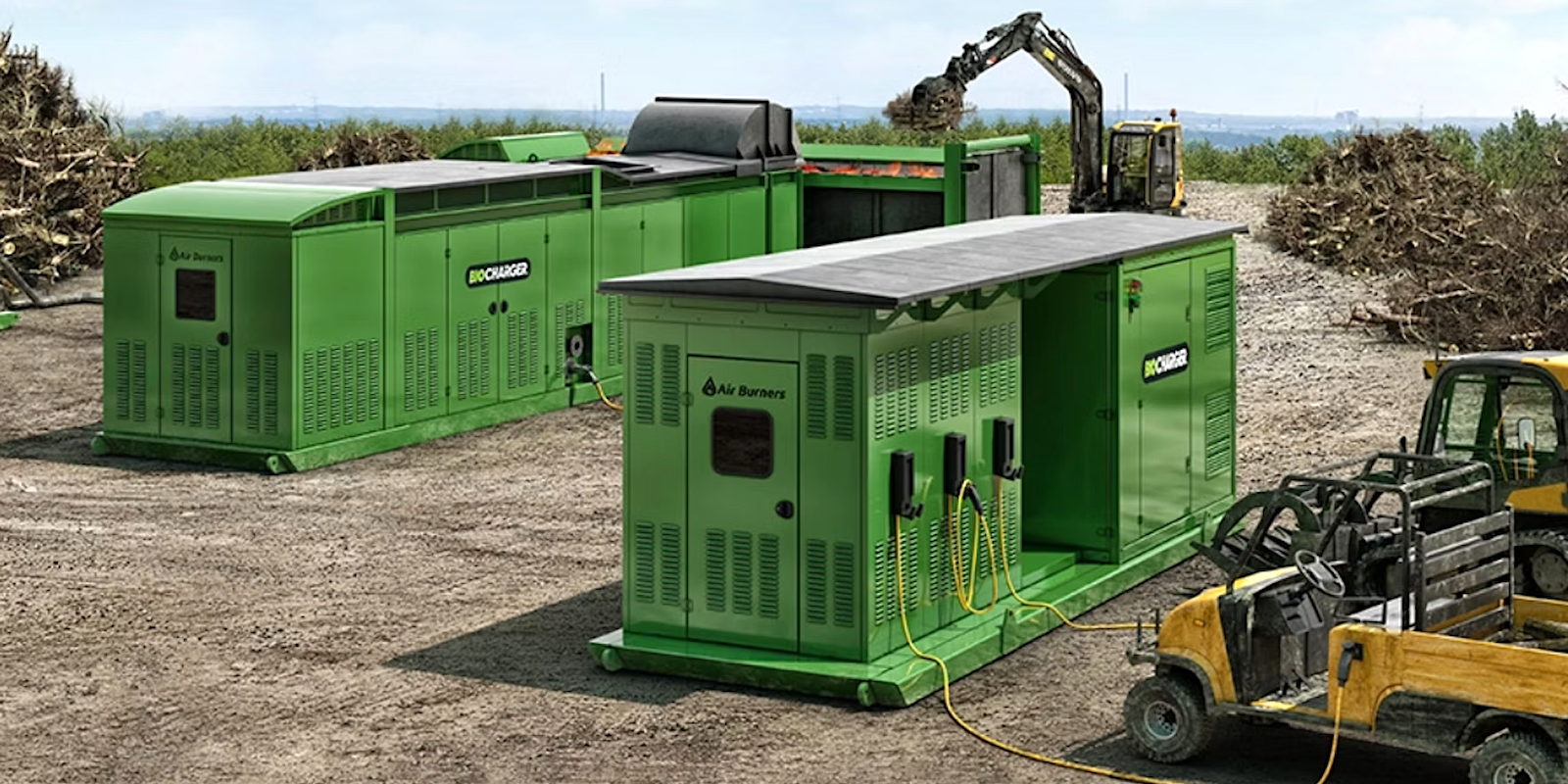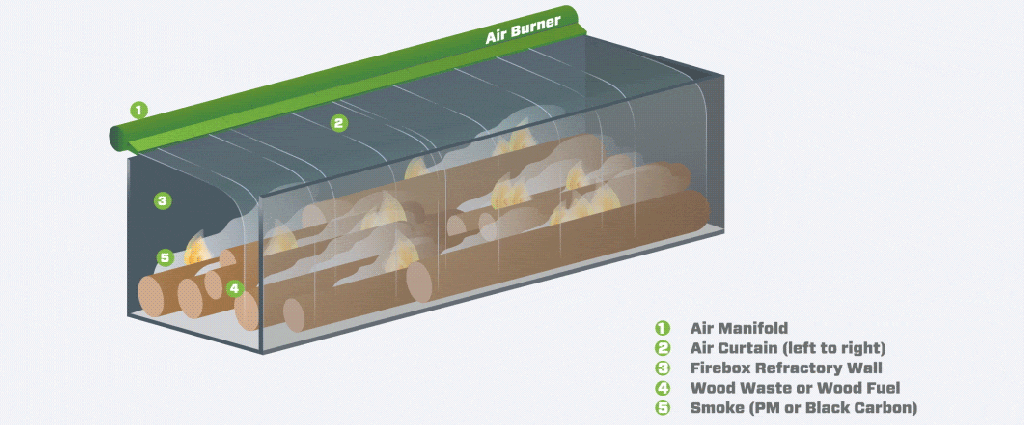
When work is being done off the grid in remote locations, it can be hard to keep construction equipment fueled up – regardless of whether that fuel is liquid or electric. But now, the new, first-of-its-kind BioCharger from Air Burners is about to make that job a whole lot easier.
There’s a saying in the construction business that goes, “you might be working for the power company, but that doesn’t mean you have power.” And when you’re tasked with clearing trees, blazing trails, and quite literally laying the foundations of infrastructure and energy grid expansion, there simply isn’t a place to plug in your electric equipment. Enter: the BioCharger.
A collaborative effort between Volvo CE, Rolls-Royce, and Air Burners, the BioCharger uses “air curtain technology” to burn wood and waste in a closed-loop system. The resulting heat is converted into electric energy and stored in a connected Battery Storage Module, or BSM. That energy can then be used to charge battery-electric vehicles, construction equipment, and portable power tools throughout the job site.
Especially when that job site is deep in the woods.
“While electric machinery becomes increasingly popular in the fight against climate change, when it comes to forest management, we must have practical solutions for charging electric machinery away from traditional power sources,” explains Brian O’Connor, president of Air Burners. “The Air Burners BioCharger provides that solution … in an economical and environmentally conscious way.”
To back up that claim, Air Burners points out that some seventy million tons of wood waste are collected annually in the US alone, but more than 50% of that waste is left to open burns or decomposition, which releases particulate matter and greenhouse gases into the atmosphere. In contrast, the company claims its “closed-loop system” significantly reduces harmful particulate matter and greenhouse gas emissions compared to open burns.
And, of course, it turns what would otherwise be “waste heat” into useful electricity. And it was Rolls-Royce (the power-production company, not the BMW-owned auto brand of the same name) that helped Air Burners develop the 450-kWh EV charging station within the BioCharger.
“The BioCharger is a unique application for our mtu EnergyPack battery energy storage system that I think shows just how versatile energy storage can be,” said Kevin McKinney, sales director at Rolls-Royce Solutions America. “The BioCharger’s ability to reduce emissions and generate energy through responsible handling of vegetative waste perfectly aligns with our targets to support our customers with innovative solutions for the transition to clean power generation.”
The BioCharger is currently in a pilot testing phase with a prototype of the 23-ton Volvo EC230 Crawler Electric Excavator ahead of that vehicle’s commercial launch later this year.
Electrek’s Take
While I’m not crazy about the idea of burning millions of tons of wood and bio waste to charge up EVs, the BioCharger’s claimed efficiency and emissions-slashing technology seem to make it a viable charging option on job sites where conventional grid energy isn’t feasible. Whether or not it’s more practical (or cleaner) than a similarly bio-based diesel or hydrogen fuel cell generator.
At the core of that question is the company’s “Air Curtain” technology, which is explained by Air Burners as follows …
Air Burners’ “Air Curtain” technology

The primary purpose of the air curtain is to create a “secondary burn chamber.” The air curtain is like a lid covering the opening in a FireBox. The particles of smoke rising on the hot gasses of the fire are trapped under the air curtain. These smoke particles are then reburned and their size is significantly reduced. With this reduced size, they can now escape through the air curtain and appear more like waves of heat than smoke. The result is a very clean burn, with opacities well under 10% per EPA Method 9 Testing (as compared to open burning, which typically can run at 80% to 100% opacity).
… all of which sounds good to me, but I’m no wood-ologist. Take a look at the company’s technology page for yourself then let us know what you think of the BioCharger’s chances of success in the comments.
FTC: We use income earning auto affiliate links. More.






